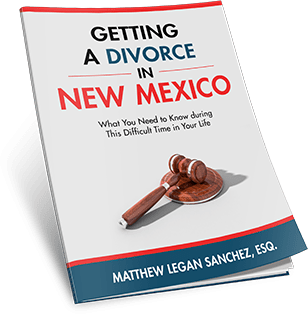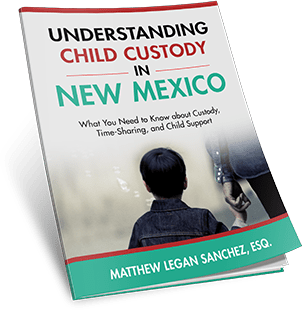
Are you researching the pros and cons of legal guardianship vs. adoption in Albuquerque? If so, you probably are providing a child with love, care, and support. In doing so, you may be curious about the differences between legal guardianship and adoption.
Understanding the differences can help you decide the best way to move forward. Armed with this information, you can more effectively decide which path is best to take towards assuming parental rights and responsibilities.
WHAT’S THE DIFFERENCE BETWEEN PERMANENT GUARDIANSHIP AND ADOPTION?
Without question, the biggest difference between legal guardianship and adoption is that adoption permanently terminates parental rights. In other words, once finalized, a biological parent typically cannot terminate or revoke an adoption. Alternatively, even “permanent” guardianship is temporary and can be revoked/terminated. In other words, the phrase “permanent guardianship” is misleading.
Click HERE to watch a short video that explains how to establish and revoke guardianship in New Mexico.
Other than the temporary/permanent distinction, legal guardianship and adoption are similar. With both, a caregiver assumes parental rights and responsibilities. The caregiver either assumes these rights temporarily (guardianship), or permanently (adoption). Additionally, with both, a GAL should become involved when the case is contested.
FAMILY COURT VS. CHILDREN’S COURT
In New Mexico, another difference between legal guardianship and adoption is where the cases are filed. For example, special guardianship is requested or revoked in Family Court. Conversely, adoption is handled in Children’s Court.
This difference is important because the two courthouses may have different policies and procedures. Moreover, the two have different judges and filing requirements. Finally, the two courthouses have different caseloads. Accordingly, at times, the process can seem much different between family court and children’s court.
ADDITIONAL GUARDIANSHIP REQUIREMENTS
Oddly, even though guardianship is temporary – and adoption is permanent – guardianship sometimes requires additional work. For instance, a caregiver requesting adoption is not required to provide an alleged father with notice of the case. Moreover, in some adoption cases, the court can imply an absent father’s consent to the adoption. In other words, in some situations, the court can finalize the adoption without the biological parent’s consent.
On the other hand, an alleged father is entitled to notice that guardianship is being requested. The alleged father can appear in court, contesting the proposed guardianship. In this situation, the court should appoint a GAL to determine the child’s best interests.
DIFFERENT ADOPTION REQUIREMENTS
Unlike guardianship, the adoption process may require counseling, and a pre-post placement study to be completed. However, these additional requirements can be waived if good cause is demonstrated. For instance, the post-placement study Is not required when the child is being adopted by a stepparent.
Ultimately, the assigned judge determines if counseling and/or pre/post placement study are necessary. At times, the likelihood of these requirements being waived depends on the assigned judge’s policies and personality.
THE GUARDIANSHIP PROCESS
The legal guardianship process starts with filing a petition to establish special guardianship. The caregiver requesting guardianship must demonstrate several elements to be granted guardianship. The case likely will be dismissed if the caregiver is unable to meet these legal requirements.
Like adoption, a GAL should become involved when the case is contested. In this situation, the proposed guardian likely will be granted temporary legal guardianship. In turn, this temporary legal guardianship is valid for 180 days.
During the 180 days, the appointed GAL investigates the child’s best interest. In doing so, the GAL ultimately recommends for either temporary guardianship to continue, or to be terminated.
PROS AND CONS OF LEGAL GUARDIANSHIP VS. ADOPTION
As mentioned, legal guardianship is temporary in nature. Depending on the caregiver’s goals, guardianship’s temporary nature can either be viewed as a pro or con. For example, in some situations, temporary legal guardianship is only requested because a parent is currently unable to care for the child. However, the guardian intends to terminate/revoke guardianship once the parent is fit to care for the child.
On the other hand, at times, caregivers want to permanently end a biological parent’s rights. This generally occurs in stepparent adoptions – or when a family/relative desires to permanently establish parental rights.
HOW TO ADOPT FROM PERMANET GUARDIANSHIP
Do you have special guardianship over a child and want to adopt? In New Mexico, the legal guardianship case is established in Family Court. Moving forward, you would file for adoption in Children’s Court.
Because special guardianship has already been established, Children’s Court is more likely to waive the counseling and pre/post-placement requirements. In other words, at time, establishing special guardianship creates a smoother transition into adoption.
ALBUQUERQUE ADOPTION AND GUARDIANSHIP ATTORNEY OR LAWYER NEAR ME
Are you caring for a child and are curious about the pros and cons of temporary legal guardianship vs. adoption? If so, it is essential to speak with the Albuquerque’s best adoption attorney or lawyer. A top adoption lawyer has the experience needed to help you understand New Mexico’s guardianship and adoption laws. Speak with a tested and trusted adoption and guardianship attorney. Speak with (505) SANCHEZ.

The Pros and Cons of Guardianship vs. Adoption







